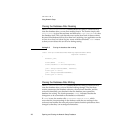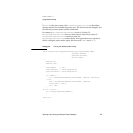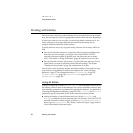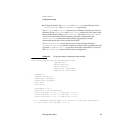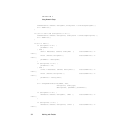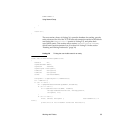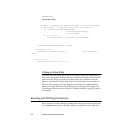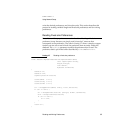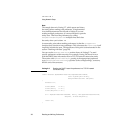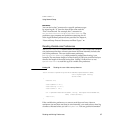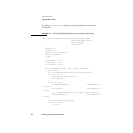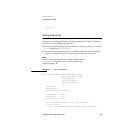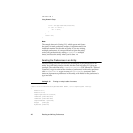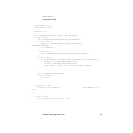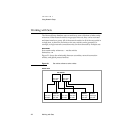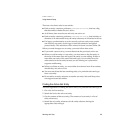
CHAPTER 2
Using Network Setup
36 Reading and Writing Preferences
Note
The sample shown in Listing 2-7, which opens and closes
the entity before reading each preference, is implemented
in an inefficient manner for the sake of clarity. If you are
reading multiple preferences, it is more efficient to open the
entity once. Then read the preferences by calling
OTCfgGetPrefs or OTCfgSetPrefs multiple times and close
the entity when you’re done. ◆
A noteworthy point about reading preferences is that the OTCfgOpenPrefs
function does not take an area parameter. This is because the CfgEntityRef itself
implicitly includes the area. The significant of this point is demonstrated in the
section “Working with Sets” (page 42).
You can use the MyReadFixedSizePref routine shown in Listing 2-7 to read
specific preferences within an entity. For example, Listing 2-8 shows how to
read the DHCP lease information from a TCP/IP network connection entity.
The routine calls MyReadFixedSizePref, passing it the appropriate preference
type (kOTCfgTCPDHCPLeaseInfoPref), a pointer to the corresponding C structure,
and the size of the structure.
Listing 2-8 Reading the DHCP lease info preference in a TCP/IP network
connection entity
static OSStatus MyReadDHCPLeaseInfo(CfgDatabaseRef dbRef,
const CfgEntityRef *entity,
OTCfgTCPDHCPLeaseInfo *dhcpInfo)
{
OSStatus err;
assert(dbRef != nil);
assert(entity != nil);
assert(dhcpInfo != nil);
err = MyReadFixedSizePref(dbRef, entity, kOTCfgTCPDHCPLeaseInfoPref,
dhcpInfo, sizeof(*dhcpInfo));
return err;
}



